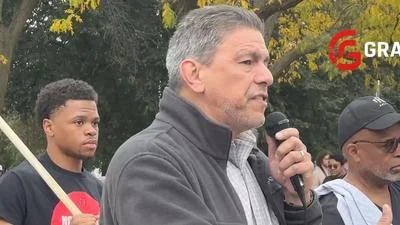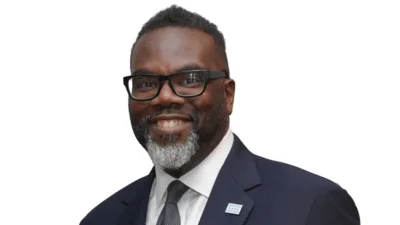Kevin Dorsey MBA, MA Executive Director, Managed Care | University Of Illinois Hospital - Chicago
Kevin Dorsey MBA, MA Executive Director, Managed Care | University Of Illinois Hospital - Chicago
Almost 800,000 Americans suffer a stroke each year, making it a leading cause of severe long-term disability. Among these individuals, up to 60% experience persistent hand and arm dysfunction following the initial event.
UI Health is now implementing vagus nerve stimulation (VNS) as a stroke rehabilitation procedure to enhance motor recovery after an ischemic stroke, which constitutes nearly 90% of all strokes.
"UI Health has been surgically implanting devices in the vagus nerve for various treatments and conditions for almost 30 years," stated UI Health neurosurgeon Dr. Konstantin Slavin. "But this is the first time we’ve used this technology for stroke recovery, and we’re very excited to have it as a part of our multidisciplinary efforts to provide stroke survivors with a sense of hope."
Neuroplasticity plays a crucial role in recovery after a stroke by allowing the brain to reorganize or rewire itself to form new neural connections. This process helps restore function when neurons become damaged or lose their function due to a stroke. However, neuroplasticity requires consistent, repetitive, and targeted therapy that can lead to gradual improvements in patients' hand and arm movements.
"This is why we wait at least six months after the stroke to assess a patient for this procedure," said Dr. Slavin. "It takes some time for a stroke patient’s deficits to be finalized. The symptoms or damages caused by a stroke may be different in a couple of months due to natural neuroplasticity."
The vagus nerve is the longest cranial nerve, extending from the brainstem through the neck, chest, and abdomen. It serves as an essential link between the brain and several internal organs. Vagus nerve stimulation devices have traditionally been used to treat epilepsy and depression by sending impulses to areas of the brain that cause seizures and affect mood. This stimulation has also been shown to improve neuroplasticity by encouraging effective rewiring of the brain, thus enhancing motor function and supporting stroke recovery.
In VNS procedures, doctors implant a wire around the vagus nerve and place a pulse generator in the patient's chest during a same-day operation. Physical therapy follows this implantation, where therapists use wireless transmitters to deliver stimulation while patients perform goal-oriented tasks like lifting or reaching repeatedly during sessions. This approach promotes neuroplasticity over time, helping build new communication pathways in the brain that can lead to significant improvements in arm and hand function.
"With ongoing advancements in neuromodulation procedures, UI Health is uniquely positioned to expand access to these breakthrough therapies," added Dr. Slavin.
For more information about VNS and other treatment options for strokes, visit UI Health's Comprehensive Stroke Center.






 Alerts Sign-up
Alerts Sign-up